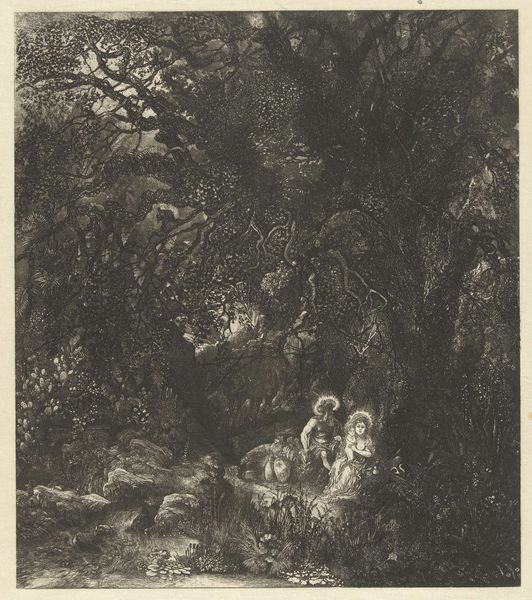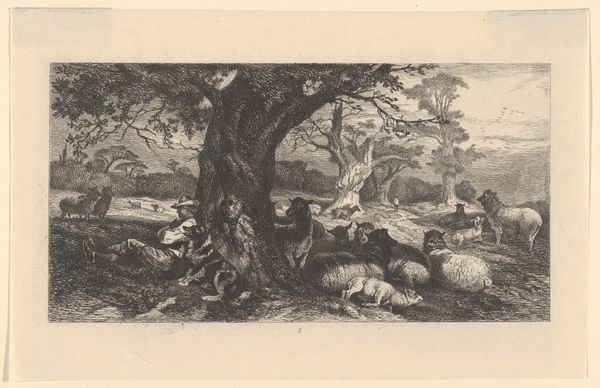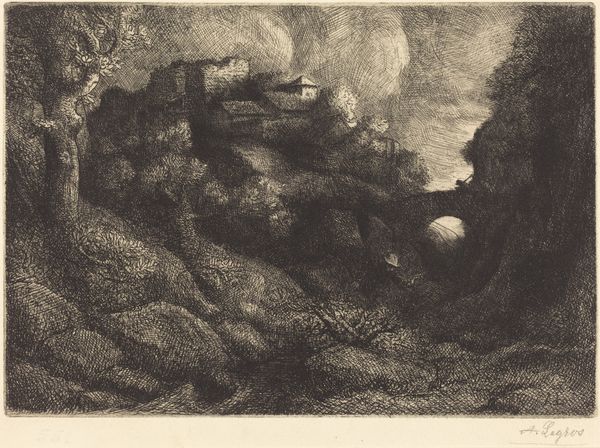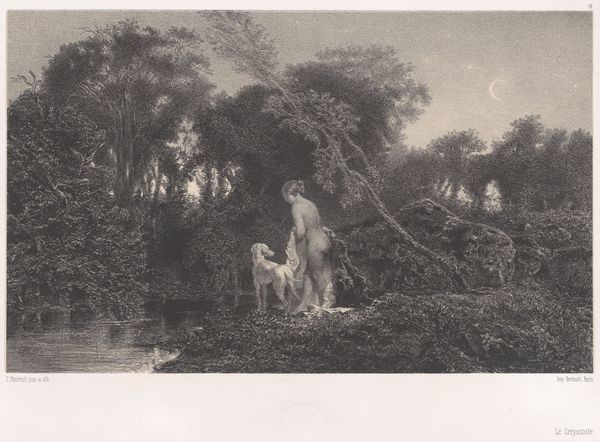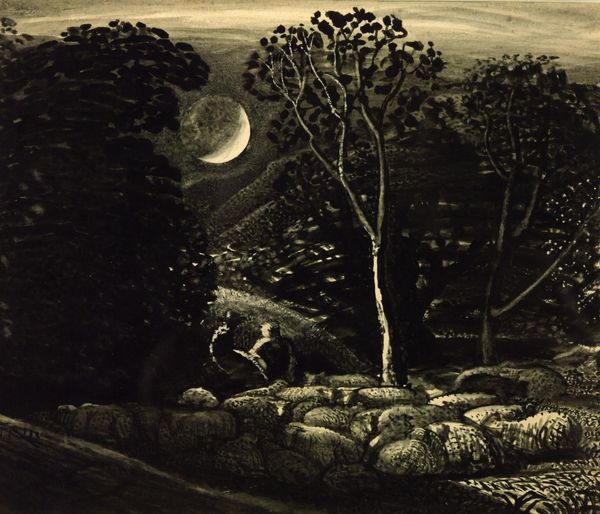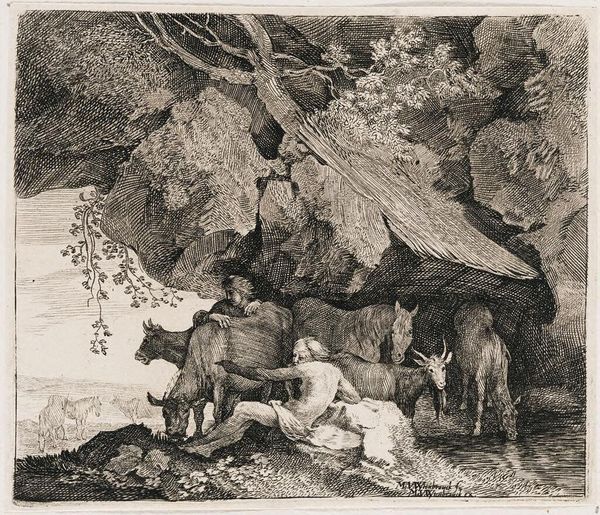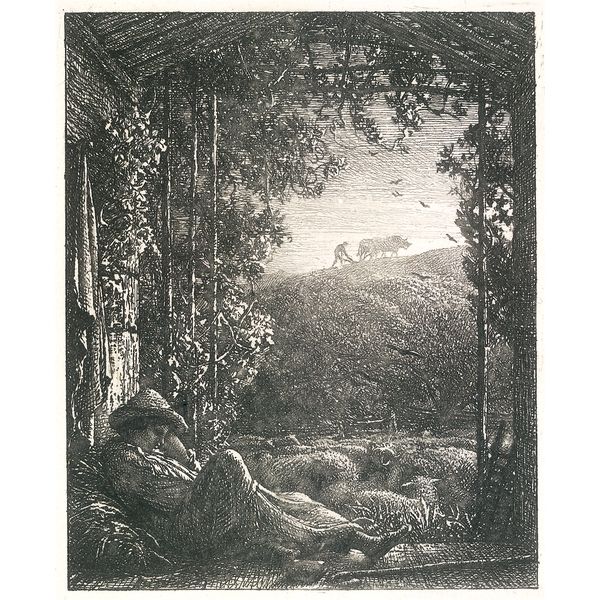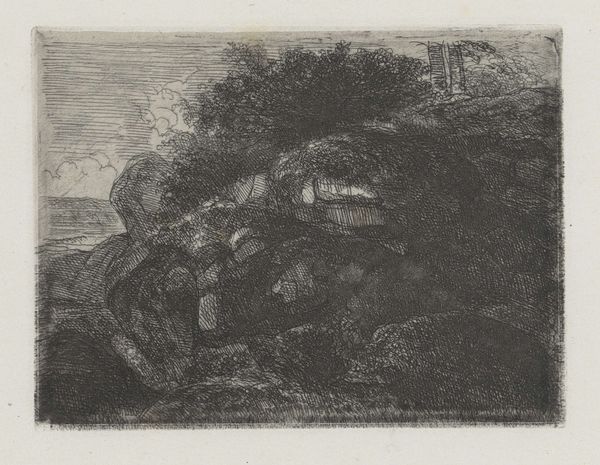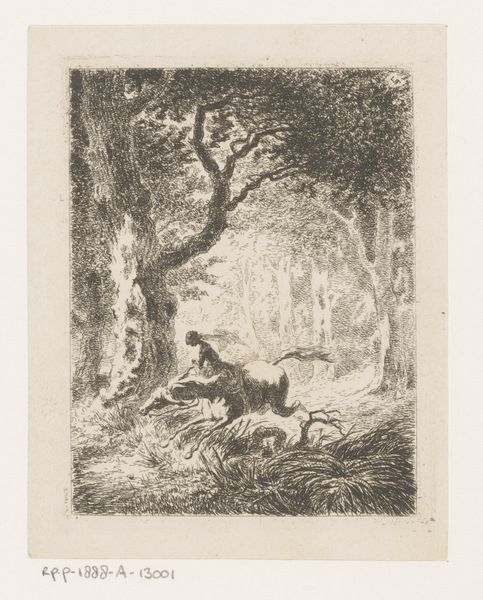
print, etching, photography
#
fairy-painting
#
narrative-art
# print
#
etching
#
landscape
#
figuration
#
fairytale
#
photography
#
romanticism
#
surrealism
#
19th century
#
genre-painting
#
fairy tale
Copyright: Public domain
Editor: Samuel Palmer’s etching, "Evening," from 1834, evokes such a peaceful mood. I’m immediately drawn to the sheep clustered together, lit by the moon, under these gnarled, old trees. What's your interpretation of this work and how does it connect with the Romantic era? Curator: This print is deeply rooted in the cultural anxieties and aesthetic aspirations of its time. Palmer and his circle were reacting against the industrial revolution and the increasingly urbanised landscape of Britain, seeking solace and spiritual renewal in nature. What you perceive as peaceful, I also see as a carefully constructed idyll. Notice how the etching technique itself, with its dense cross-hatching, contributes to this feeling of a self-contained, almost claustrophobic world, a haven from the perceived threats of modernity. Do you think this retreat into an imagined pastoral setting served a specific social function? Editor: That’s a great point about it being a 'constructed' idyll. Thinking about it further, perhaps it was intended to be viewed by an urban elite who idealized rural life without actually experiencing its hardships. A way to imagine an unspoiled Britain even as industrialization marched on? Curator: Exactly. It served as a form of cultural critique, but also as a form of escapism for a particular social class. These images reaffirmed their values and anxieties, projecting them onto an idealized vision of rural England, untainted by the changes happening around them. The "Evening" then becomes less about genuine rural life and more about a specific group's anxieties and aspirations. How does this knowledge affect your initial perception? Editor: I guess it makes me a little less charmed, and more aware of the politics inherent in even the most seemingly innocent landscapes. Thank you; I’ll certainly view these pastoral images with a more critical eye in the future! Curator: My pleasure, these artworks serve as a reminder that representations of nature are rarely, if ever, neutral; they're often charged with cultural and political meanings.
Comments
No comments
Be the first to comment and join the conversation on the ultimate creative platform.

